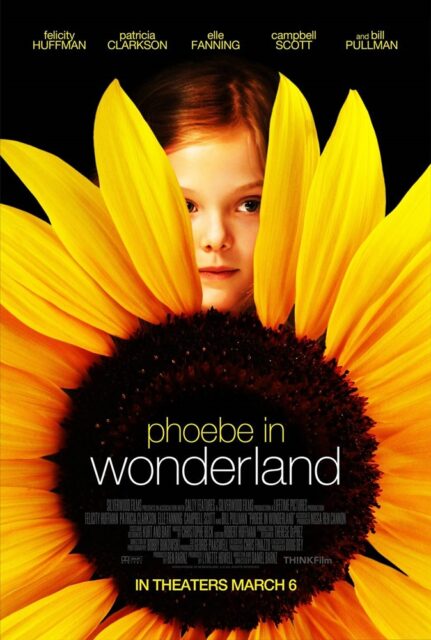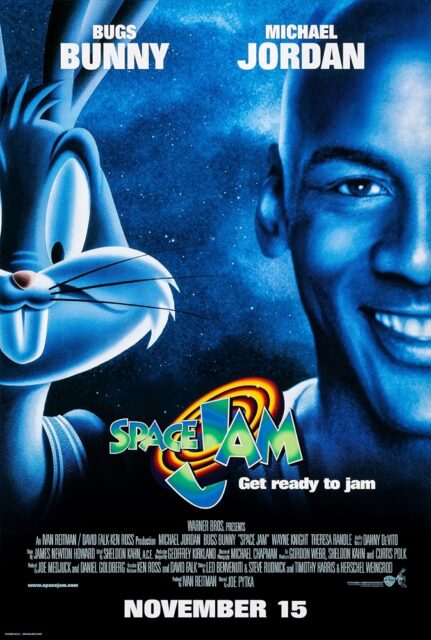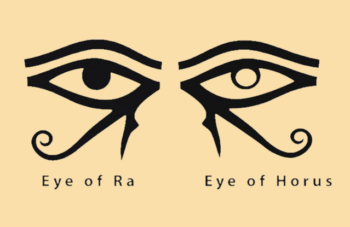Definition:
“Eye of Fantasy” refers to the symbol of a single eye used to represent a situation that is impossible, unrealistic, or inaccurate. It is often used to indicate that a character is fantasizing, misinterpreting events, or unable to accurately perceive what’s happening. This symbol can imply that the character is being deceived, daydreaming, or misunderstanding what’s really happening, unable to distinguish between what exists and what does not.
Etymology:
The word “eye” is derived from Old English “ēage,” meaning the organ of sight, and tracing back to Proto-Germanic “augon” and Proto-Indo-European “okw-“, which referred to both the eye and vision.
The word “fantasy” Comes from Old French “fantasie” and Latin “phantasia,” meaning imagination, and ultimately from Greek “phantasia” (φαντασία), which means a making visible, or appearance, particularly of the mind or imagination. It is rooted in the Greek “phaino” (φαίνω), meaning “to show.”
Description:
The religious will say: “an eye symbolizes truth because when you have both eyes open, you see double.” But that’s not true; if you close one eye, you only see half. In other words, you are fantasizing.
“The eyes are the window to the soul” is a popular saying. It is important to understand that “soul” is a fantasy word that means “fantasy.”
Symbolism:
In the supernatural horror-thriller “The Eye” (2008), Sydney Wells, a blind concert violinist, undergoes a corneal transplant to restore her sight. However, after the surgery, she begins experiencing horrifying visions of death and suffering. Sydney soon realizes that the visions are connected to the eye‘s previous owner, who had the ability to see into the supernatural realm. As she struggles to understand the disturbing premonitions, Sydney embarks on a journey to uncover the truth behind the donor’s mysterious past and stop the terrifying events from coming true. The movie poster, along with the title, symbolizes how she is actually fantasizing, as she sees things that don’t exist.

In the animated film “Madagascar 3: Europe’s Most Wanted” (2012), the tiger Vitaly forms a triangular opening with his hands as he aims at the tiny ring with one eye before doing the impossible and jumping through the ring. Click to watch the video clip.

In the TV series “Desperate Housewives” (2004-2012), season 5, episode 10, the character Dave Williams is shown with only one eye visible between the curtains as he looks out the window of his front door, talking to his dead wife and daughter. Click to watch the video clip.
In the animated movie “Monsters, Inc.” (2001), the monster Sully witnesses the young girl Boo jumping into a trashcan. As Sully gets distracted, Boo jumps out of the trashcan, but one of the eyes from her monster costume falls off, making it appear as though Boo is still inside. When the trash men pick up the trashcan and dump it into the trash disposal, Sully panics and runs to save Boo from danger. However, he’s too late. As he watches through a window, seeing the trash turned into a cube, we see Sully looking with only one eye open. The eye from Boo’s costume is visible in the trash the whole time, emphasizing how Sully is misinterpreting the situation. Click to watch the video clip.
The logo for “Monsters, Inc.” features an M with an eye in it, emphasizing that monsters are fictional creatures.

There’s a scene in “Aladdin” (2019) where the Genie is looking through an exaggerated, magical mono-binocular that extends his eye through it, creating a surreal visual effect. This playful and impossible action highlights the Genie’s power to defy reality and logic, fitting his whimsical character. The emphasis on one eye further enhances the symbolism of fantasy and the extraordinary, which are key themes in the movie. Click to watch the video clip.

In the animated movie “Elemental” (2023), the story focuses on two characters: Ember, a fiery and passionate young woman from a family of fire elementals, and Wade, a laid-back, easygoing water elemental. Ember and Wade come to like each other a lot. In one scene, the camera zooms into Ember’s eye, and we see her fantasy of how fire and water elementals cannot touch, reflecting what she has always been told. However, throughout the story, we discover that they are actually compatible. Click to watch the video clip.

In the movie “Dumbo” (2019), about the flying elephant Dumbo, he is often depicted with only one eye visible when he’s flying. Click to watch the video clips.
It is very common for the “Harry Potter” fantasy film series, which is about wizards and witches, to use one–eye symbolism to promote its movies. This is done by hiding one eye in shadow, covering one eye with hair, showing only one eye in a window reflection, making only half the face visible (either by framing half the face or covering it with something), showing characters from the side, or featuring a one–eyed character.
There’s a scene in “Harry Potter and the Chamber of Secrets” (2002) where the left lens of Harry Potter’s glasses is cracked. Hermione waves her wand at him while saying, “Oculus Reparo,” magically repairing his glasses. Right after, Harry Potter twitches his left eye, as he often does. Click to watch the video clip.
“Fantastic Beasts” is a film series set in the same wizarding world as “Harry Potter,” and it acts as a prequel to the “Harry Potter” series. Both Harry Potter and Fantastic Beasts are part of the same larger franchise, which is officially referred to as the Wizarding World franchise. It is also very common for the “Fantastic Beasts” fantasy film series to use one–eye symbolism to promote its movies. This is done by hiding one eye in shadow, covering one eye with hair, making only half the face visible (either by framing half the face or covering it with something), showing characters from the side, or featuring a one–eyed character.
One–eye symbolism is present in posters for the fantasy movie “Alice in Wonderland” (2010), where the White Rabbit is shown turning his head so that only his left eye is visible while pointing at his pocket watch.
One–eye symbolism is also present in a poster for the sequel “Alice Through the Looking Glass (2016),” featuring the same image of the White Rabbit turning his head so that only his left eye is visible while pointing at his pocket watch, but this time, the White Rabbit is hanging upside down. In this poster, the character Mad Hatter has two different colored eyes. His right eye is yellow while his left eye is green.
The movie poster for “Phoebe in Wonderland” (2008) features Phoebe peeking between the leaves of a sunflower, which is covering her right eye.

In both the poster for “The Lord of the Rings: The Fellowship of the Ring” (2001) and the poster for “The Lord of the Rings: The Return of the King” (2003), the character Aragorn is portrayed with his hair covering his left eye. In the poster for “The Fellowship of the Ring,” Merry, Sam, and Pippin are positioned together, looking up from the side, with only the left eye of each character visible. Boromir is shown from the side, with only his right eye visible as he blows the Horn of Gondor. The arc shape of the horn and the single eye together form the Islam symbol, which is also known as the Mason symbol. In the poster for “The Return of the King,” Arwen, the elven princess, is depicted in profile on the left side of the poster, making only her right eye visible.
It is common for the “Star Wars” science fiction franchise, which is about the battle between good and evil in a galaxy where the heroic Jedi fight against the tyrannical Sith, using a mystical power called the Force, to use one–eye symbolism when promoting its movies. This is done by hiding one eye in shadow, covering one eye, making only half the face visible, or showing characters from the side.
It is common for the “Avatar” science fiction franchise, about humans mentally linked with genetically engineered bodies (called Avatars) that resemble the moon Pandora’s indigenous population, the Na’vi, to use one–eye symbolism when promoting its movies.
The romance-fantasy film franchise “Twilight” revolves around a bestiality love triangle between a human teenager, a century-old vampire, and a shape-shifting werewolf. The franchise often uses one–eye symbolism to promote its movies. They do this by hiding one eye in the shadow, or showing only half of a face.
The science-fiction franchise “Transformers,” which is centered around the concept of advanced, sentient robots from a distant planet (Cybertron) that can transform into vehicles, animals, and other forms, often uses one–eye symbolism to promote its movies. They achieve this through close-ups of an eye or by showing only half of a face. In one poster, the robot Optimus Prime is holding up the Matrix of Leadership, which is a glowing, energy-filled core surrounded by metallic framework, shaped like an eye. It symbolizes his authority and leadership over the Autobots.
The role-playing game series “Final Fantasy” often uses one–eye symbolism in its video game cover art. This is done by showing characters from the side, making only one eye visible, or by having hair cover one eye.
The movie poster for “Deceived” (1991) features the main character Adrienne Saunders with only her right eye visible as she is being deceived. She discovers that her husband, Jack Saunders, had been living a double life with hidden identities and secrets.

The movie poster for “Space Jam” (1996) shows only half of Bugs Bunny’s and Michael Jordan’s faces, highlighting a blend of animated and live-action worlds. The one–eye symbolism on the poster further highlights the film’s fantastical elements, where animation and reality merge.

In the poster and film cover of the romantic drama “Daydreamer” (2007), both characters are depicted with one eye visible each. As the story unfolds, it raises the question of whether one of the characters is imagining the existence of the other.
A movie poster for “Toy Story 2” (1999), which is about toys that are secretly alive, features the character Jessie winking.

The term “Visioneer” is often used to describe a person who imagines and envisions future possibilities, particularly in fields such as technology, design, and innovation. The movie poster for “Visioneers” (2008) features a man wearing a monocle-like apparatus that looks more like a magnifying glass attached to the right lens of his glasses.

Articles:
Eye
Definition: The “eye” is a complex sensory organ responsible for vision. It detects light and converts it into electrochemical signals, which are then processed by the brain to produce images….
Eye and Smile
Definition: The “Eye and Smile” is a symbol that consists of a single eye and a smile. Etymology: The English word “eye” comes from the Old English “ēage”, which is…
Eye of Deception
Definition: The “Eye of Deception” is a symbolic representation that what is being observed or conveyed is false or misleading. It serves as a warning or indication that what is…
Eye of Jesus
Definition: The term “Eye of Jesus,” also known as the “Eye on the Cross,” typically refers to a metaphorical or symbolic concept within Christian theology and spirituality. It is not…
Eye of the Devil
Definition: The “Eye of the Devil” typically refers to a malevolent, watchful gaze that symbolizes evil, misfortune, or a sinister presence. It can be interpreted literally, as an actual eye…
Eye of Truth
Definition: The “Eye of Truth” is a symbolic concept carrying dual meanings. The Eye of Truth is used by spiritual people as a metaphor for seeing that which does not…
Eyes of Horus
Definition: The “Eyes of Horus” is an ancient symbol originating from ancient Egyptian mythology where a set of two eyes were referred to as the Eyes of Horus, Udjat, or…
Illuminati
Definition: “Illuminati” refers to individuals who understand how language, religion, and the world system are scams. Etymology: The term “Illuminati” originates from Latin and means “the enlightened.” It is derived…
The All-Seeing Eye
Definition: The “All-Seeing Eye,” also known as the “Eye of Providence” or the “Eye of God,” is a symbol often depicted as an eye enclosed in a triangle and surrounded…
Tower of Babel
Pieter Bruegel the Elder: The Tower of Babel (1563). Lucas van Valckenborch: Tower of Babel (1594). Gustave Doré: The Confusion of Tongues. Definition: “Babel’s Tower” is a fictional tower from…



























































































































































































































































